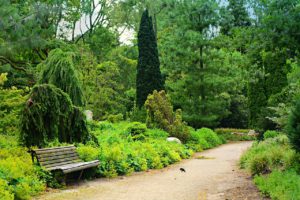Today’s public spaces and recreational facilities are being built with greater attention to safety, sustainability, and engagement. Using non-toxic paint in activity zones protects the environment and ensures safer air quality for users of all ages. As installations like the Ninja Warrior obstacle course are popular, designers integrate creative, challenging features that encourage physical movement while maintaining high safety standards. Additionally, features like course wire tree guards preserve natural elements in active spaces without compromising functionality or accessibility. Together, these choices form the foundation for environments that support healthy, active lifestyles.
The Rise of Movement-Friendly Design
As cities and communities prioritise wellbeing, active design has taken centre stage. Urban planners, landscape architects, and playground designers now focus on how public and private spaces can promote movement, interaction, and enjoyment. Whether it’s an outdoor fitness park or a kids’ adventure zone, the aim is to inspire more people to be active throughout the day.
Spaces that support active living benefit physical health, enhance mental wellness, reduce stress, and foster social connection. The challenge lies in balancing excitement and durability with sustainability and safety.
Materials That Support Safe Play
The materials chosen for active environments directly impact user health and long-term performance. For example, paint is now a standard across many projects, especially where handrails, surfaces, and barriers are touched frequently.
Beyond paint, designers also opt for recycled rubber flooring, low-impact coatings, and sustainably sourced timber to minimise environmental impact. This shift ensures that the spaces built to enhance health are also healthy.
Building Challenges That Encourage Confidence
The rise of the ninja warrior course in recreational design reflects a growing appetite for adventure and fitness in everyday environments. Inspired by televised competition shows, these courses suit various age groups and ability levels—from children navigating balance beams to adults testing their upper body strength on monkey bars and warped walls.
Safety remains a top priority. Designers must consider spacing, fall zones, and materials that cushion impact while maintaining challenge and excitement. Modular designs also allow for future upgrades or difficulty adjustments, making the space more inclusive and engaging for long-term use.
Integrating Nature with Smart Protection
Outdoor fitness spaces often incorporate trees and natural landscaping for shade and aesthetics. However, heavy foot traffic and equipment placement can put these plants at risk. These durable, breathable enclosures protect young trees and root zones from damage without obstructing growth or visual appeal.
Tree guards also prevent vandalism, accidental impact, and soil compaction in high-use areas, allowing greenery to thrive alongside active installations. As a result, users enjoy shade, fresh air, and a more natural environment while the ecosystem remains preserved.

Creating Inclusive and Multi-Use Spaces
An important aspect of designing for active living is ensuring that spaces are welcoming and usable for people of all abilities. Obstacle courses, trails, and outdoor gyms should be designed with a mix of equipment that supports various strength levels, balance abilities, and physical mobility.
Accessible pathways, adaptive exercise zones, and clearly marked signage help users navigate and enjoy the space safely. These features not only support inclusion but also expand the facility’s reach and value across generations and community groups.
Durability Meets Design
Active environments endure heavy use, which means durability is as important as design appeal. Materials must be weather-resistant, tamper-proof, and easy to maintain. Whether it’s galvanised steel used for climbing frames or mesh-infused pathways for drainage, every detail contributes to longevity.
Wire-based features, such as mesh dividers, fence panels, or tree protection elements, serve multiple functions—they guide foot traffic and secure zones and provide a modern, minimal aesthetic that complements urban and natural settings.
Encouraging Year-Round Use
Designing for all seasons extends the usability of active environments. Shaded areas, covered rest zones, and lighting for early mornings or evenings make the space functional beyond the warmest months. Water stations, seating, and visibility enhance the space’s comfort and safety.
Features like non-slip surfacing and corrosion-resistant materials support ongoing use regardless of rain, temperature changes, or humidity. These design decisions help create destinations that are not just appealing on paper—but functional in real life, all year round.
Inspiring Healthy Habits from a Young Age
The earlier healthy habits are introduced, the more likely they will stick. Environments incorporating challenging yet fun physical elements help children build strength, confidence, and resilience. From climbing ropes to balancing paths, movement-rich spaces contribute to physical literacy—an essential component of long-term fitness.
When designed with vibrant colours, clear instructions, and fun themes, these areas become attractive gathering points that draw kids (and parents) into movement without formal programming.
Final Thoughts
Communities thrive when movement, sustainability, and health come together in one space. These environments don’t just support an active lifestyle—they inspire it.
